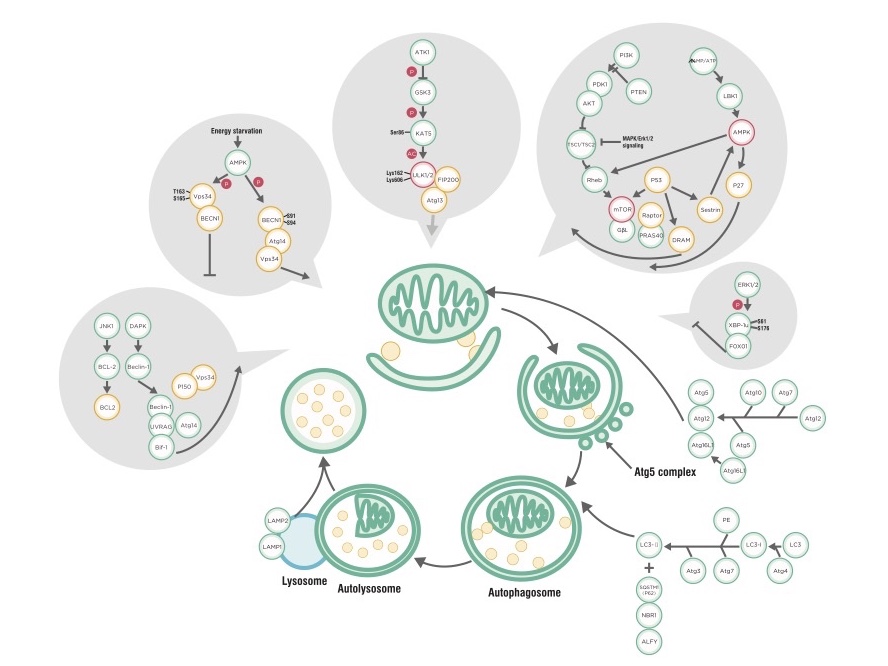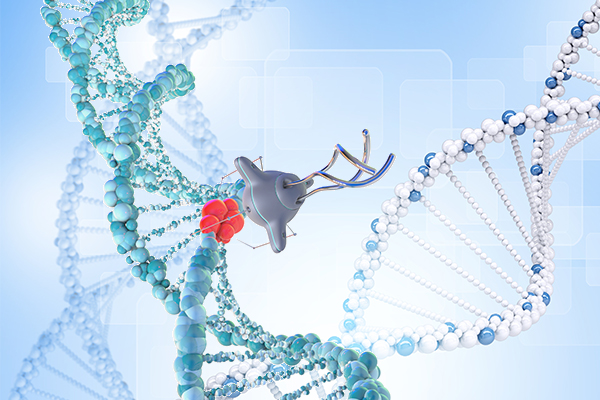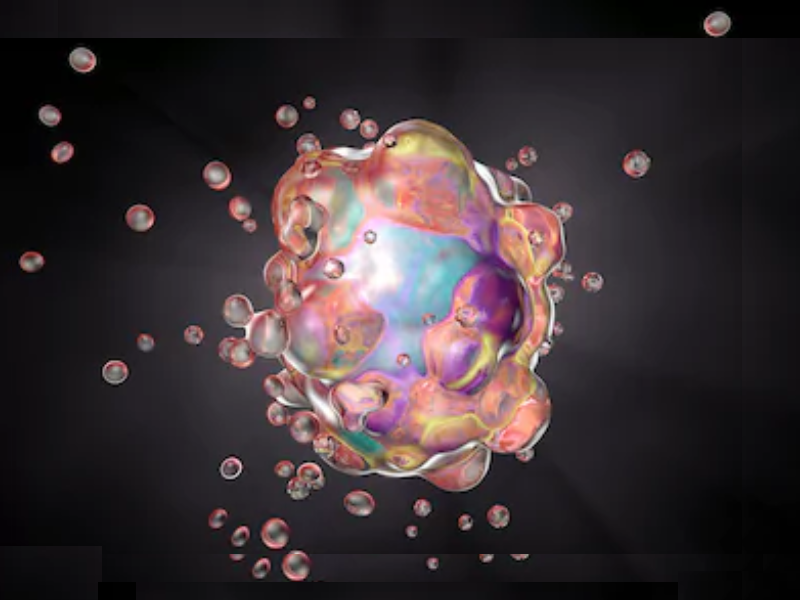Autophagy can be understood as ‘self-eating’. In simple terms, it is a vitally important cleansing mechanism carried out by the cells in our body. It brings about the degradation of the cytoplasmic contents within membrane bound vesicles called lysosomes.
A Rundown on Autophagy
Autophagy first came into the picture in the early 1960’s, when researchers observed the digestion of cellular contents in lysosomes. This sort of natural recycling process, wherein the damaged parts are degraded and used for making new cells or as a source of energy, is essential to maintaining cellular homeostasis and helps relieve stress in the cells.
Function and Applications of Autophagy
Autophagy helps to get rid of defective proteins and organelles, to prevent abnormal protein aggregate accumulation, and to remove intracellular pathogens. In this spectrum of housekeeping processes, autophagy is found to be instrumental in disease protection for cancer and dementia, among several other neurodegenerative diseases. Autophagy has also aided in establishing a better understanding of both Parkinson’s and Alzheimer’s disease. A lack of regular autophagy results in the accumulation of large number of proteins that present in these neurodegenerative diseases.
Autophagy also plays a key role in cell development and differentiation, the suppression of tumors, and may also have a role in prolonging lifespan. Autophagy was previously thought of as a fuel in cancer, but has recently been hailed as an effective tool with a potential for developing therapeutic approaches to counter cancer progression. In addition to its therapeutic potential, autophagy also resists pathogen invasion.
Research and Types of Autophagy
Much research has been carried out in identifying and characterizing the genes responsible for Autophagy (ATG genes). Fundamental knowledge and research of ATG genes in yeast and corresponding orthologs in several organisms reveals that the machinery for the process is conserved in eukaryotes.
Autophagy is categorized in three types: macroautophagy, microautophagy and chaperone-mediated autophagy (CMA). Macroautophagy, the predominant pathway used to remove unwanted proteins/organelles, proceeds through the formation of an autophagosome, while microautophagy directly destroys cellular contents within the lysosome. CMA is a very complex and specific pathway compared to the other two, and it typically requires that the protein be degraded in order to have a binding domain for the Hsc70 complex.
Mechanism of Autophagy
Not much was known about the mechanism of autophagy, until a Japanese cell biologist and researcher named Yoshinori Ohsumi conducted a series of experiments in the early 1990’s. His brilliant discoveries led to him being awarded the prestigious Nobel Prize in Physiology or Medicine in 2016.
Autophagy is believed to be initiated through the formation of phagophore/isolation membranes, whose origins are still a matter of debate. The intracellular contents, including protein aggregates and ribosomes, are engulfed by phagophores, enclosing them in a double membrane-bound autophagosome. Upon fusion and maturation with lysosome, the contents are then degraded by lysosomal acid proteases. The amino acids and other by-products of degradation are ultimately carried back into the cytoplasm by transporters.
It can therefore easily be discerned that autophagy is a crucially important biological phenomenon. With an increased understanding of the mechanism and the factors involved in autophagosome formation, scientists have come a long way and have even been able to reconstruct the autophagosome in a test tube—certainly a non-trivial task. This demonstrates that autophagy is an area with a wide scope in research, and is favored by many scientists. To keep up with the demand and to support research in this field, ABclonal offers a range of antibodies suitable for autophagy research. The following table lists some of our best-selling antibodies, click the product names to learn more about the individual product:
Recommended Best-Sellers for Autophagy Research
|
Category |
Target Name |
Cat.No. |
Product Name |
Applications |
|
ULK1 complex |
ULK1 |
A8529 |
WB, IHC, IF |
|
|
AP0736 |
WB |
|||
|
Beclin-1 complex |
Beclin 1 |
A7353 |
WB, IHC, IF, IP |
|
|
Autophagosome elongation |
ATG5 |
A19677 |
WB, IHC |
|
|
A0203 |
WB, IF |
|||
|
ATG12 |
A19610 |
WB |
||
|
LC3 family |
LC3 |
A19665 |
WB, IHC, IF |
|
|
A7198 |
WB, IHC, IF |
|||
|
A11282 |
WB, IF |
|||
|
A12319 |
WB, IHC |
|||
|
A5618 |
WB, IF |
|||
|
A8295 |
WB, IHC, IF |
|||
|
GABARAP |
A4335 |
WB |
||
|
A12568 |
WB, IHC |
|||
|
GABARAPL1 |
A7790 |
WB |
||
|
GABARAPL2 |
A9585 |
WB |
||
|
A7782 |
WB, IHC, IF |
|||
|
Cargo proteins interacted with LC3 |
p62 |
A19700 |
WB, IHC, IF |
|
|
A11483 |
WB, IHC, IF, IP |
|||
|
A7758 |
WB, IHC, IF, IP |
|||
|
NBR1 |
A3949 |
WB, IHC, IF, IP |
||
|
BNIP3 |
A19593 |
WB, IHC |
||
|
A5683 |
WB, IHC, IF |
|||
|
BNIP3L |
A6283 |
WB, IHC |
||
|
PINK1 |
A7131 |
WB, IF |
||
|
Parkin |
A0968 |
WB, IHC, IF |
**Please note that all products shown above have human, mouse and rat reactivity except AP0736 and A19610, that have only human, and human and mouse reactivity respectively.
**Apart from the above list, ABclonal also offers other autophagy related products and antibodies which can be found here (autophagy products) and here (autophagy antibodies).
Conclusion
It can be concluded that autophagy is a very complex but necessary process of degradation occurring within cells. It also plays an important role in human diseases since a lack of frequent autophagy can cause certain cancers, neurodegenerative diseases and other health complications including immune system dysfunction. Research is being carried out to develop therapies to regulate autophagy and manage diseases.
References:
1. Yang, Zhifen, and Daniel J Klionsky. “An overview of the molecular mechanism of autophagy.” Current topics in microbiology and immunology vol. 335 (2009): 1-32. doi:10.1007/978-3-642-00302-8_1
2. Nassour, J., Radford, R., Correia, A. et al. Autophagic cell death restricts chromosomal instability during replicative crisis. Nature 565, 659–663 (2019). https://doi.org/10.1038/s41586-019-0885-0
3. University of Vienna. "Autophagy: the beginning of the end: Scientists reveal key steps in the formation of the recycling centers of the cell." ScienceDaily. ScienceDaily, 4 September 2020. <www.sciencedaily.com/releases/2020/09/200904121335.htm>.



